MIT’s Good Jobs Institute created this framework to help employers seeking to improve worker experience, retention, and productivity to assess their performance across nine “essential elements” of a quality job. These include meeting an employee’s basic needs, such as through fair wages and a flexible schedule, and meeting “higher needs” such as personal growth, belonging, and recognition. While designed for employers, the framework has relevance for all practitioners seeking to define and assess job quality in an organization.
The Innovative Finance Playbook provides an overview of the financial fundamentals of an employee stock ownership plan (ESOP) conversion. Users can access case studies of capital funders and companies that underwent transition. The playbook also lays out what criteria a company should meet to be viable for employee ownership.
This toolkit complements the Democracy at Work Institute’s “Becoming Employee-Owned” guide. It provides a basic overview of employee ownership and its benefits, including brief examples of businesses that operate under various forms of ownership. A checklist allows owners to self-assess their progress toward moving a business to employee ownership, from the exploration phase to the completion of the transition.
A directory of key organizations and indidviduals working on employee ownership. It includes governmental and nongovernmental organizations, including at the state, national, and international level.
This simple, user-friendly calculator serves as a tool to measure the income needed by a family to maintain an adequate standard of living in a specific community. It can calculate costs based on all counties and metro areas in the US and for 10 family types (one or two adults with zero to four children). Family budgets are calculated using seven components: housing, food, transportation, childcare, healthcare, taxes, and “other necessities.”
This calculator is a tool for estimating the living wage by US metro area, county, state, region, or at the national level. The living wage is defined as the wage needed to cover basic family expenses including housing, food, childcare, transportation, health, and other necessities, plus relevant taxes. The calculator estimates the living wage needed to support families of 12 different compositions (one to two adults with up to three children). Practitioners across fields can use this tool to benchmark compensation in local communities or firms against a wage rate that allows residents to meet minimum standards of living. Because the Massachusetts Institute of Technology is a nonpartisan research institution, practitioners report that this tool has credibility with a range of audiences including businesses.
This detailed assessment is a tool to help employers generate a report about their social and environment impact, including impact on workers, and to benchmark against peer companies. It includes measures of job quality, including compensation, benefits, safety, and worker ownership. Practitioners who work with businesses could direct them to this tool or even walk them through it.
The US Private Sector Job Quality Index (JQI) is intended to reflect job quality in the United States, using data on weekly wages and hours for high wage jobs versus low wage jobs. Released each month on the same day as the Bureau of Labor Statistics’ US Employment Situation Report, it captures a distinct view of labor market health and offers monthly tracking of the composition of high quality to low quality jobs, using pay as a proxy for overall job quality. Historical data also documents a shift from jobs in manufacturing to services, as well as a shift within services from higher to low quality jobs.
This brief synthesizes existing knowledge on the landscape of benefits available to workers in the United States and the impacts of those benefits. It begins by defining workplace benefits and providing a brief history of their use. It then explores the connection between workplace benefits and job quality, mapping known impacts against key components of job quality. Finally, it reflects on opportunities for improvements in job quality and for future research.
This piece provides a summary and highlights from “Job Quality in the Fields: Improving Farm Work in the US,” an Opportunity in America event that highlighted the challenges of agricultural workers and ideas for improving their working conditions.
